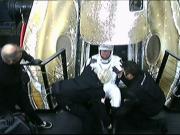Several scientists have previously revealed that space radiation is one of the most dangerous challenges astronauts should face during deep space missions. As the United States is now preparing to send astronauts to the moon again, the biggest dangers astronauts will face will be space radiation, as it could cause severe health hazards that include cataracts, cancer and, neurodegenerative diseases.
New Study Reveals Dangers
NASA had successfully landed humans multiple times on the moon in the 1960s and 70s as a part of their Apollo missions. These missions proved that humans could stay safely in the moon for a few days, but the United States space agency apparently did not take daily space radiation measurement which will help to understand how many days an astronaut could survive in space.
Now, a new study conducted by researchers using the data obtained by China's Chang'e 4 lander has found that the radiation in the moon is two to three times higher than the space radiation in the International Space Station.

"The radiation of the Moon is between two and three times higher than what you have on the ISS (International Space Station). So that limits your stay to approximately two months on the surface of the Moon. The radiation levels we measured on the Moon are about 200 times higher than on the surface of the Earth and five to 10 times higher than on a flight from New York to Frankfurt," Robert Wimmer-Schweingruber, an astrophysicist at the University of Kiel and the co-author of the study told AFP.
Moon Mission Dilemma
After analyzing the data obtained by the Chang'e 4 lander, researchers revealed that the radiation exposure on the Moon is 1,369 microsieverts per day which is 2.6 times higher than the radiation received in the International Space Station. According to experts, ISS is partially protected by the earth's magnetosphere, and it makes it less vulnerable to space radiation.
As NASA is considering the moon landing as a first step before the milestone Mars colonization mission, protecting astronauts from space radiation could be the most challenging task that will be faced by the space agency.
A few months back, Samantha Rolfe, an astrobiologist at the University of Hertfordshire had claimed that NASA's upcoming Mars mission could turn out to be suicidal. According to Rolfe, humans who walk on the Red Planet will be exposed to deadly radiations, as Mars does not have its own magnetic field.








